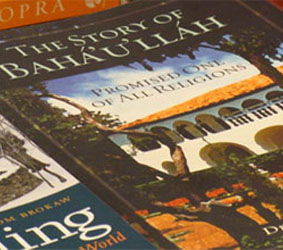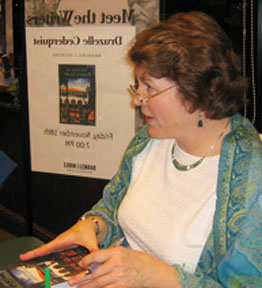 Creative Nonfiction:
Creative Nonfiction:
Breathing Life into a Body of Facts
“The word ‘creative’ refers simply to the use of literary craft in presenting nonfiction—that is, factually accurate prose about real people and events—in a compelling, vivid manner. To put it another way, creative nonfiction writers do not make things up; they make ideas and information that already exist more interesting and, often, more accessible.”
When I began work on The Story of Baha’u’llah I did not want to write the usual historical narrative. I wanted to write a page-turning story that would mirror the drama of an extraordinary life. But how to do it? Early on I attended a writer conference, where I discovered that the kind of story I wanted to write had a name – creative nonfiction. I discovered, too, that I could be forgiven for my ignorance of it. Creative nonfiction was still very young.
In the 1960s, while I reported the who-what-when-where-why for my school newspaper, creative nonfiction had not even found its name. It was not a genre taught in school. It was experimental writing in the hands of writers reaching for ways to tell deeper stories. Stories whose larger truths stretched beyond the boundaries of traditional reporting. Over time,
with much debate and hard work, the new approach eventually flourished, finding a niche in every kind of nonfiction and growing into a genre all its own.
Writers still call it by various labels: creative nonfiction, dramatic or narrative nonfiction – the “literature of reality.”
I call it breathing life into a body of facts. It was the tool I
used to take the reader inside Baha’u’llah’s life and the
early tumultuous beginnings of the Baha’i Faith. It is also
why readers will sometimes ask, if not wonder to themselves:
“Is The Story of Baha’u’llah all true?"
A fair question. Because creative nonfiction brings the world of Baha’u’llah to life in a whole new way. The reader is immersed in episodes that unfold scene by scene – drawn into actions as they occur, struggles as they arise, choices as they are made – very much like following characters in a novel. But unlike a novel, these things are NOT inventions of my imagination. Events set in a market place in Tehran, a coffee house in Baghad, a prison cell in Acre – all are rooted in meticulous research.
To be sure, some details are drawn from common sense: if horses run, they will sweat; if the season is spring, flowers will bloom. But it is all true – nonfiction. The creativity comes as details are woven together to create scenes, scenes coalesce to create a world, an era – a reality in which the people of that time once again live and move, converse and take action.
What I was NOT creative with were the facts. I did not invent characters or dialogue. I did not take liberties with the thoughts and feelings of Baha’u’llah, or any of the real people I wrote about. I took these things from recognized historical sources. I used the writings of Baha’u’llah as the surest source for His own thoughts and feelings. And in the editing process Baha’i Publishing rigorously rechecked all facts and resources.
So to answer the question – yes, The Story of Baha’u’llah is all true, and as accurate as possible.
The one underlying truth of good creative nonfiction
is this:
It does not tell readers what to think or how to feel. Instead, it offers well-researched information in a way that engages the
reader’s own imagination to bridge the gap between mind and heart, between knowledge and insight. 
From the responses of my readers, that intimate con- nection with The Story of Baha’u’llah has been greater than I ever antcipated.
____________________________________________________________________________________________________________